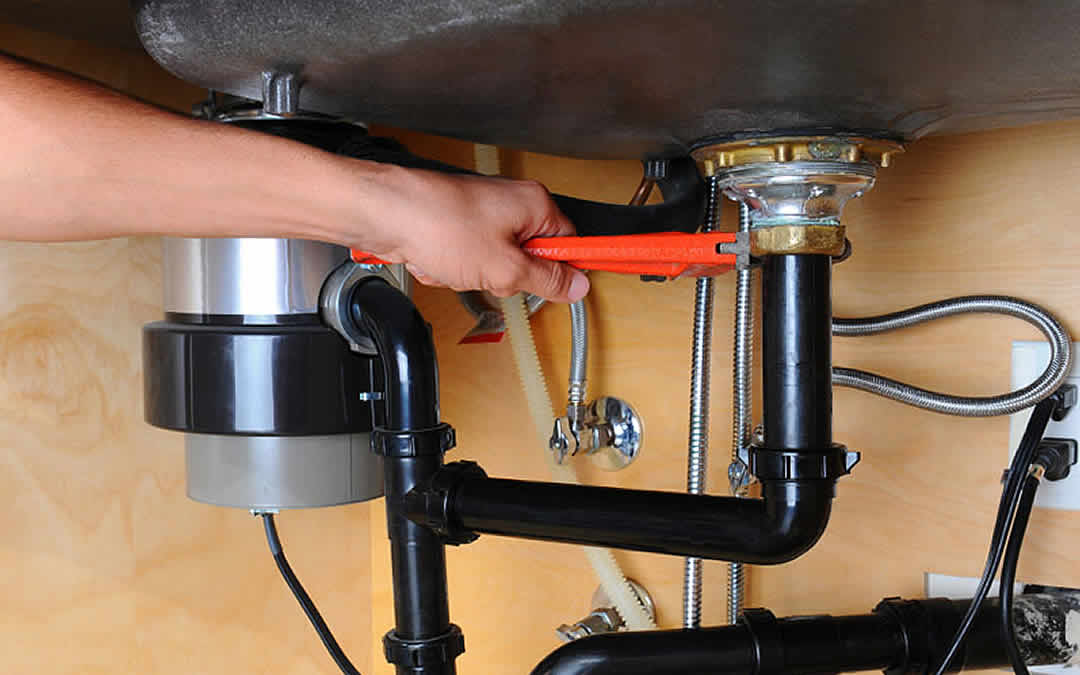Helpful Methods for Fixing a Dripping Garbage Disposal
Helpful Methods for Fixing a Dripping Garbage Disposal
Blog Article
Just about every person is bound to have their own individual conception about Why Is My Garbage Disposal Leaking From the Bottom?.

Garbage disposals are essential kitchen appliances that aid in dealing with food waste successfully. However, a leaking waste disposal unit can be a frustrating and messy issue to handle. Thankfully, many leaks can be fixed conveniently with a few simple actions. In this article, we will certainly talk about just how to repair a dripping garbage disposal properly.
Introduction
Waste disposal unit are installed under kitchen area sinks and are made to shred food waste into smaller pieces, enabling it to travel through the pipes system easily. While these gadgets are usually dependable, leaks can happen over time due to deterioration, loose connections, or damages to the system.
Usual Sources Of Leaks in Garbage Disposals
Worn Seals and Gaskets
Seals and gaskets play a vital role in avoiding water from leaking out of the waste disposal unit. With time, these parts can weaken, resulting in leaks around the disposal unit.
Loose Links
The connections between the waste disposal unit and the plumbing system can become loosened in time, creating water to leakage out during procedure.
Fractures or Holes in the Disposal System
Physical damage to the waste disposal unit, such as fractures or openings in the housing, can also result in leaks.
Identifying the Source of the Leak
Before trying to deal with a dripping garbage disposal, it is essential to identify the resource of the leak. This can commonly be done through visual examination or by conducting basic examinations.
Visual Inspection
Check the waste disposal unit device carefully for any signs of water leakage. Pay very close attention to areas around seals, gaskets, and link factors.
Examining for Leakages
One means to examine for leakages is by running water with the disposal system and checking for any visible indications of leakage.
Devices and Products Needed for Taking Care Of a Leaking Garbage Disposal
Prior to starting the repair work procedure, gather the necessary devices and materials, consisting of a screwdriver, flexible wrench, plumbing's putty, replacement seals or gaskets, and epoxy or patching product for repairing cracks or holes.
Step-by-Step Overview to Taking Care Of a Leaking Waste Disposal Unit
Shut off the Power
Before trying any fixings, guarantee that the power to the waste disposal unit device is turned off to stop the risk of electrical shock.
Locate the Leak
Recognize the precise area of the leak and identify the reason.
Tighten Connections
Make use of a wrench to tighten up any loosened links between the disposal system and the plumbing system.
Replace Seals or Gaskets
If the leakage is due to worn seals or gaskets, eliminate the old elements and change them with brand-new ones.
Patching Splits or Openings
For splits or openings in the disposal system, use epoxy or an ideal patching product to secure the damaged area.
Evaluating the Garbage Disposal After Repair Service
When the repair is full, examine the garbage disposal by running water through it to make certain that the leakage has actually been solved.
Preventive Maintenance Tips to Stay Clear Of Future Leaks
To prevent future leakages, it is necessary to perform routine upkeep on your waste disposal unit. This includes keeping it clean, preventing putting non-food products or difficult items down the disposal, and occasionally looking for leakages or various other problems.
Conclusion
In conclusion, dealing with a leaking waste disposal unit is a relatively uncomplicated process that can be finished with basic devices and materials. By complying with the steps outlined in this post and practicing precautionary upkeep, you can keep your waste disposal unit in good working problem and avoid expensive fixings in the future.
HERE’S HOW TO FIX YOUR GARBAGE DISPOSAL
WHAT TO DO IF SOMETHING IS STUCK IN YOUR GARBAGE DISPOSAL
If the impeller won’t turn, there’s probably something stuck in the disposal. It could be a steak bone or peach pit, although plumbers report pulling all sorts of inappropriate objects out of disposals, such as bottle caps or aluminum foil. Make sure power to the disposal is off, and look inside to see if you can see the source of the jam.
Never stick your fingers in a disposal. Pull out anything you see with tongs or pliers.
If the disposal still won’t work, it may be time to call a plumber or consider buying a new disposal. GEM Plumbing & Heating is here for all of your garbage disposal needs.
WHAT TO DO IF YOUR GARBAGE DISPOSAL DRAIN IS CLOGGED
Take everything out from underneath your sink and put a bucket or other container under your disposal to catch any water that drains out. Disconnect your disposal from the power supply. If it’s plugged into a wall outlet, unplug it. If it’s hardwired into an electrical box, go to the electrical panel and turn off the breaker for the disposal. Pour ¼ cup of baking soda into the drain, followed by ½ cup of white vinegar. Give the solution a few minutes to fizz and do its work. Look into the disposal with a flashlight to see if you can see an object that might be causing the clog. If you see it, remove it using tongs or pliers. MORE TIPS ON DEALING WITH A CLOGGED GARBAGE DISPOSAL
Never use drain cleaner in a garbage disposal. It can damage the plastic parts inside the disposal. You can also be splashed with the caustic liquid while working to clear the clog. Beware! Never stick your fingers into a garbage disposal. Trust us — not a good idea. In many instances, your dishwasher drains through your garbage disposal. This allows the disposal to grind any large food particles that may be drained out of your dishwasher. There are some jurisdictions, however, where the plumbing code prohibits such a connection. WHAT TO DO WHEN YOUR DISHWASHER DRAINS THROUGH THE DISPOSAL
Run some water in the sink so your plunger has at least a ½-inch of water to create a seal and plunge vigorously up and down several times. You may need to repeat this several times. Run hot water down the drain to clear any residue that remains.

I was shown that editorial on Why Is through an associate on another domain. Sharing is nice. Helping others is fun. I praise you for your time. Come back soon.
Book Appointment Now Report this page